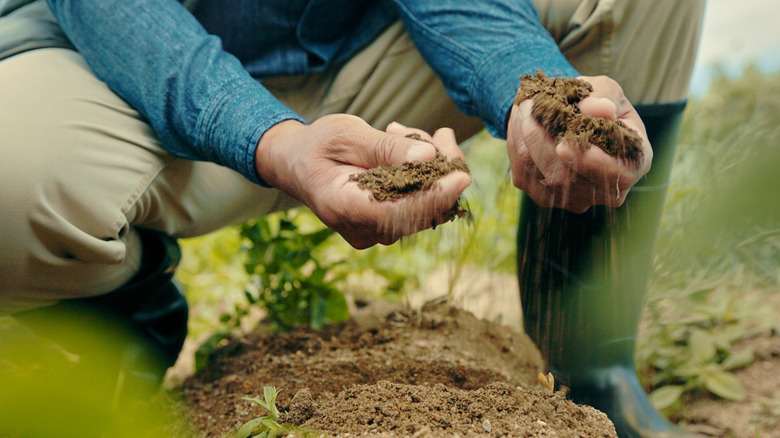The Gardening DIY You Need To Test Your Soil's pH Levels
We may receive a commission on purchases made from links.
If you have leggy or struggling plants, it's often a sign that you should test the soil's pH level. You can invest in professional testing; however, you can also try a DIY budget-friendly method to measure the pH of your soil instead. Armed with a few soil samples, water, pH testing strips, and a bit of time, this test will let you determine whether the soil is acidic or alkaline, a key component in identifying your plants' nutrient needs.
When reading about the ideal growing conditions for nearly any plant, you may come across notes about the preferred pH range. This is crucial, as plants vary in how alkaline or acidic they prefer their soil. The range is 0, or very acidic, to 14, or very alkaline, and 7 is neutral. Soil acidity matters because it has a big impact on a plant's growth and correlates with the amount of nutrients available, as well as how the soil attracts them. For instance, iron is accessible in acidic soils, but as soil becomes more alkaline, it's less available. As a result, you could have an iron deficiency within your plants, even though the soil is iron-rich. Checking the pH of your soil regularly is an excellent way to monitor soil health for your plants, and in just a few minutes, you'll know the condition of your soil. Here's how to do your own DIY test.
Conducting a DIY soil pH test
You'll first need to collect a series of soil samples across your lawn or garden, using a cup or something else to hold them. Be sure you collect only soil, not any loose bits of wood or stones. Once you have collected your samples, pour distilled water into each sample container, then mix into a slurry or milkshake consistency. Mud samples created, let them sit for 15 minutes. Never use any water other than distilled, because tap water may have impurities that could interfere with the test's accuracy.
Once you've let the mixture sit a bit, stir again, and then you can conduct the test. You can typically find pH test strips in the gardening section of your local hardware store or online, with options like Luster Leaf Rapitest Soil Test Kit. Holding the strips by the non-testing side, dip one into each sample, keeping them in the soil for several seconds, or as directed on the strip's packaging. Each strip typically comes with a color chart that indicates the acidity or alkalinity of your sample. After you've kept the strip in for the recommended period of time, remove and examine your results, comparing them to the color indicator. Once you determine the pH, you can then start making your soil more acidic or alkaline, depending on your needs.

